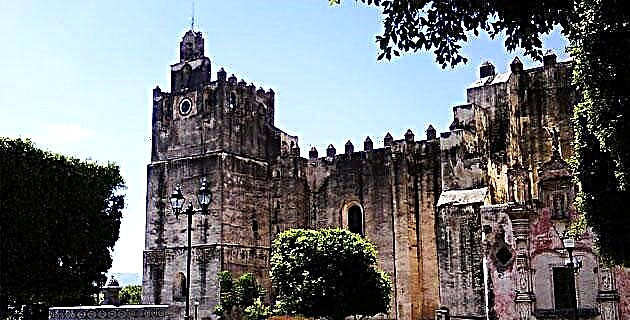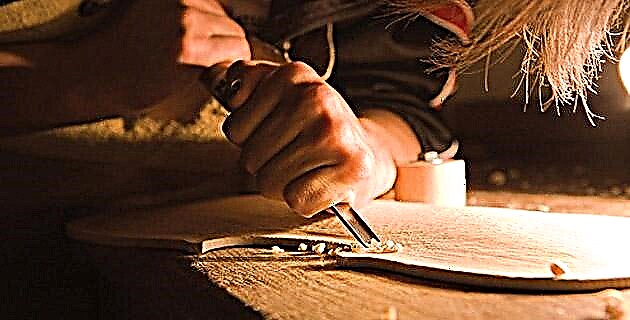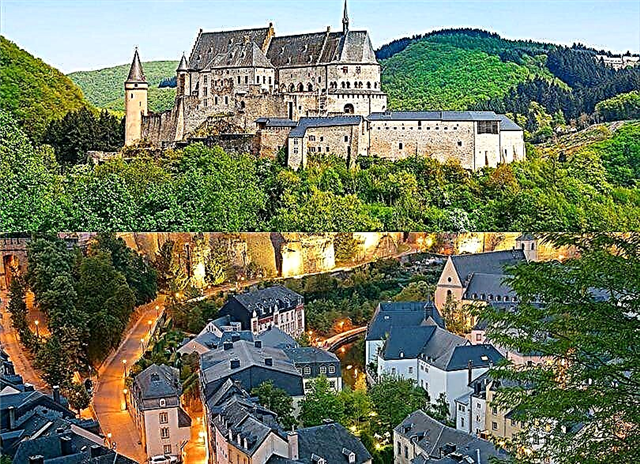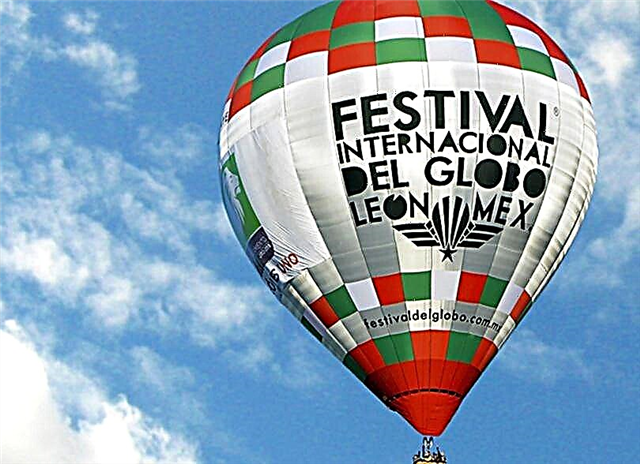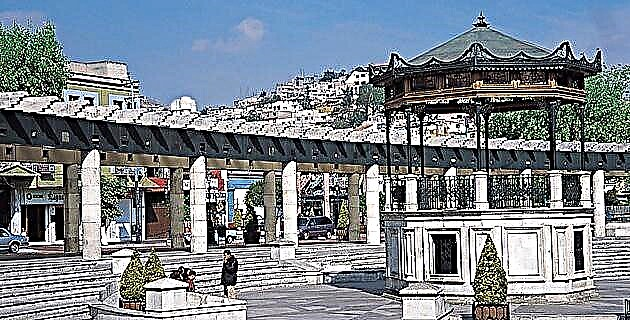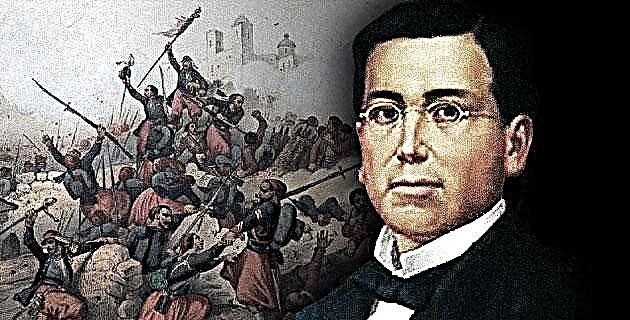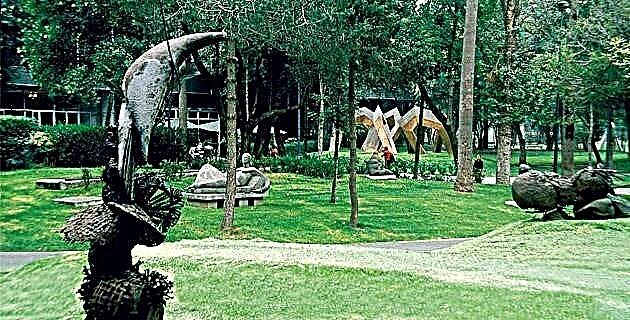
Graeme Stewart, a Scottish journalist living in Mexico City, inquires about the museum enthusiasm of his host country.
It could be said that, of all the countries in Latin America, Mexico is the most interested in its own past and culture, and to prove it, just take a look at the long lines to enter various art galleries and museums. Thousands line up to see the latest exhibits; the scenes are reminiscent of those seen in the great art galleries and museums in Madrid, Paris, London and Florence.
But there is a big difference: in the great centers of art in the world many, if not most of those who line up in front of the Prado, the Louvre, the British Museum or the Uffizi, are tourists. In Mexico, the overwhelming majority of those waiting under the sun's rays are Mexicans, ordinary people determined not to miss the most recent art exhibitions that open in the country's big cities.
Mexicans have a culture of culture, that is, they seem to have a deep interest in matters related to their roots. And when those roots materialize in an exhibition, they do not hesitate: schools, factories and companies mobilize, buy tickets and secure their place in the lines that can meander around a couple of city blocks when crowds of Mexican enthusiasts wait their turn. to delight in art, science and history.
A persistent habit
Roxana Velásquez Martínez del Campo cannot hide her enthusiasm when she talks about Mexicans and their love and appreciation for art. As director of the Palacio de Bellas Artes, her job is to attract, organize and promote the exhibitions that are mounted in this museum, a rare but beautiful building that on the outside is Neo-Byzantine while on the inside it is strictly Art Deco.
With bright eyes and a big smile, she notes, “Maybe it's our best feature. By breaking all records of attendance at art exhibitions, we show the world that Mexico is a country extremely interested in its culture. Exhibitions, concerts, operas and museums are always full of Mexicans who enjoy them ”.
According to the official, this is not surprising, since “Mexico has been a cradle of art since the pre-Hispanic era. Even in towns there are museums and exhibitions that draw crowds. You can take a taxi and the taxi driver will start talking about the foreign exhibitions that could be shown. Here it is endemic ”.
During the three centuries of the viceroyalty, art and culture meant everything to the people of Mexico. Everything was celebrated, from sacred art to silverware. The same thing happened in the 19th and 20th centuries, and artists from all over the world were drawn to Mexico. “That left an indelible tradition of culture in the Mexican psyche. Since we went to elementary school, they take us to visit art galleries and museums.
The classics
According to the cultural information system of the National Council for Culture and the Arts (Conaculta, the federal agency dedicated to cultural affairs), of the 1,112 museums throughout the country, 137 are in Mexico City. When visiting the Mexican capital, why not start with some of the must-see places?
• To see pre-Hispanic art, go to the Museo del Templo Mayor (Seminario 8, Centro Histórico), where unique pieces that were found in the main Aztec ceremonial center are exhibited. The museum has two areas, dedicated to the material and spiritual worlds of the Mexican culture. On a smaller scale, Diego Rivera designed the Anahuacalli, “the house of the land on the lake,” with Mexican style, his studio on Museo Street, in the Coyoacán delegation. Pre-Hispanic cultures throughout the country have their Museum of Anthropology (Paseo de la Reforma and Gandhi), one of the largest in the world.
• Those interested in the art of colonial Mexico and the 19th century will find wonderful pieces at the National Museum of Art (Munal, Tacuba 8, Centro Histórico). Enthusiasts should also take a look at the decorative arts exhibits at the Franz Mayer Museum (Av. Hidalgo 45, Centro Histórico).
• The Colegio de San Ildefonso (Justo Sierra 16, Historic Center) is a complex dedicated to temporary exhibitions.
• For those who like sacred art, there is the Museum of the Basilica of Guadalupe (Plaza de las Américas, Villa de Guadalupe) and the Museum of the Sacred Scriptures (Alhambra 1005-3, Col. Portales).
• Modern art is one of Mexico's strong cards, and there is no shortage of places to admire it. Two excellent options are the Tamayo Museum (Paseo de la Reforma and Gandhi), built in 1981 by Teodoro González de León and Abraham Zabludovsky, and just across the street, the Museum of Modern Art. The rounded rooms of its twin buildings house a complete sample of paintings from the 20th century Mexican art movement.
• There are several museums dedicated to the life and work of Diego and Frida, including the Museo Casa Estudio Diego Rivera y Frida Kahlo (Diego Rivera 2, Col. San Ángel Inn) and the Museo Casa Frida Kahlo (London 247, Col. Del Carmen Coyoacán).
• Mexico is well known for its handicrafts, and the best place to admire them is the recently inaugurated Museo de Arte Popular (Revillagigedo corner with Independencia, Centro Histórico).
• Science and technology are represented in three museums that are located in the Chapultepec Forest: the Science and Technology Museum, Papalote Children's Museum and the Natural History Museum.
Rare & interesting
It may be that the lesser known and miscellaneous collections in Mexico City sum up the insatiable national thirst for shows and exhibitions. Only a society addicted to culture can frequent museums as diverse as:
• Museum of Caricature (Donceles 99, Historic Center). In an 18th century building that was once the Colegio de Cristo. Visitors can see examples of this discipline dating from 1840 to the present.
• Shoe Museum (Bolívar 36, Historic Center). Exotic, rare and special shoes, from ancient Greece to the present, in one room.
• Archive Museum of Photography of Mexico City (next to the Templo Mayor complex). Fascinating photographs showing the development of the capital.
• Other unusual themes include the Museo de la Pluma (Av. Wilfrido Massieu, Col. Lindavista), the Museo del Chile y el Tequila (Calzada Vallejo 255, Col. Vallejo poniente), the Museo Olímpico Mexicano (Av. Conscripto, Col. Lomas de Sotelo) and the wonderful Interactive Museum of Economy (Tacuba 17, Historic Center), whose headquarters was the Betlemitas Convent in the 18th century.
Draw crowds
Carlos Philips Olmedo, general director of three of the most popular private museums: the Dolores Olmedo, the Diego Rivera Anahuacalli and the Frida Kahlo, believes that the Mexican need for art and culture stems from the national love for color and form.
In a breath during Diego Rivera's exhibition at the Palacio de Bellas Artes, he affirms: “Yes, it is a phenomenon but it is natural, not only for Mexicans but for all humanity. Just see the humanistic work of great artists like the British sculptor Sir Henry Moore and see how popular they are around the world. Great works of art have the power to move people; it is intrinsic to our nature to be interested in art, to seek art, and to express ourselves through art.
“Search all of Mexico and you will find that there is a profusion of color in everything from our homes to our clothing to our food. Perhaps we Mexicans have a special need to see beautiful and colorful things. We also understand how an artist like Frida Kahlo suffered excruciating pain and dealt with it through her art. That catches our attention; we can identify with it.
“That is why I believe that the desire for art is intrinsic to human nature. Perhaps it is a little more intrinsic in Mexicans; we are exuberant people, very positive and we can identify with great works of art very easily ”.
The power of advertising
A refreshing burst of skepticism came from Felipe Solís, director of the National Museum of Anthropology, a man who has directed numerous exhibitions of international stature, both in the national territory and abroad.
The National Museum of Anthropology is the jewel in the crown of Mexican museums. The gigantic complex has 26 exhibition areas organized to show all the local pre-Hispanic cultures through time. To get the best out of them, stakeholders should plan at least two visits. It attracts tens of thousands of people every weekend and the demand is even higher when it receives special samples, like the one from Pharaohs in 2006 or the one from Persia in 2007.
However, Solís does not share the idea that Mexicans have a special relationship with art. Rather, he points out, the massive attendance at high-profile exhibitions is driven by three factors: worship, publicity and free admission for children under 13. Always pragmatic, he says: “I think that the belief that Mexicans have a special affinity with art is nothing more than a myth. Yes, hundreds of thousands attend the great exhibitions, but themes like the pharaohs or Frida Kahlo are cult topics.
“To take an example from another cult, if I could put together an exhibition on Diana, the Princess of Wales, there would be lines that would circle the block, day and night, for weeks. And an exhibition will not attract people unless it is well publicized. Also, remember that children under 13 are free to enter museums. In fact, only 14 percent of visitors to this museum pay to enter. So the parents bring the kids and the crowds grow. If you visit any of the small, independent museums, you won't find many visitors. I'm sorry, but I don't think that Mexicans have an inherent desire for art and culture greater than that of others ”.
In and out
The anthropologist Alejandra Gómez Colorado, based in Mexico City, had the pleasure to disagree with Solís. She is proud that her compatriots seem to have an insatiable desire to admire great works of art.
Gómez Colorado, who participated in the supervision of the exhibition dedicated to the Pharaohs at the National Museum of Anthropology, believes that attending exhibitions such as Pharaohs and Persia helps Mexicans to assume their place in the world. He explained: “For centuries Mexicans looked inward and somehow felt cut off from the world. We have always had a lot of art and a lot of culture, but everything had been Mexican. Even today, our pride is the National Museum of Anthropology, which tells the story, or stories, of our History. So when an international exhibition comes around, Mexicans come to see it. They like to feel part of the world, to bond not only with Mexican art, but also with the art and culture of Europe, Asia and Africa. It gives them the feeling of belonging to a larger community and that Mexico has shaken off its insular attitudes ”.
When organizing an exhibition, Gómez Colorado understands the importance of planning, promoting and marketing; after all, that's part of their job. “No one can deny that the design and layout of an exhibition are important, as are the press and advertising. It is true that these factors can drive or destroy an exposure. For example, the Frida Kahlo exhibition at the Palacio de Bellas Artes was beautifully designed, engaging the visitor first with her early sketches and then with photographs of Frida and her contemporaries, before presenting her great works to viewers. These things don't happen by accident, but are carefully planned to increase the enjoyment of everyone who takes the time to come. "
First in line
So nature or education? The discussion will continue, but most experts think that the desire of Mexicans to admire great works of art, or even the work of artisans in the towns, is inherent in the Mexican character.
Anyway, after seeing the crowds for the big shows, I am not taking the risk: I will be first in line.
Source: Magazine Scale No. 221 / December 2007

